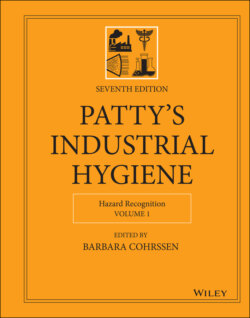Читать книгу Patty's Industrial Hygiene, Hazard Recognition - Группа авторов - Страница 79
5.1 Policy and Responsibilities
ОглавлениеANSI Z590.3 emphasizes the need for establishing policy and assigning roles and responsibilities for carrying out PtD efforts. A defined policy and process should be implemented to incorporate PtD in the design phase and throughout the life cycle. Policies should be designed to include the following:
Anticipating, identifying, and assessing systems to avoid, eliminate, or reduce hazards and risks.
A structured hazard analysis and risk assessment process to address identified hazards.
Risk reduction using the hierarchy of controls to achieve acceptable risk levels.
Risk assessors knowledgeable, skilled, and close to the hazards and risks.
A monitoring process for effectiveness and continual improvement.
A recording and reporting system to document results during design reviews, risk assessments, and treatment.
Organizations should define responsibilities to address opportunities to prevent or reduce risk when new risks are introduced, or changes occur. Such risk assessment triggers include (i) the planning, purchase, and installation of new facilities, processes, equipment, technologies, and materials; (ii) the modification of or addition to existing facilities, processes, equipment, technologies, or materials; (iii) following incidents and unwanted events to investigation, assess, and select corrective actions; and (iv) the demolition, decommissioning, or repurposing of systems.
An organization's acceptable risk levels and its goal to achieve an acceptable level of risk (ALOR) in their designs and workplaces must be clearly defined and communicated to stakeholders. Achieving and maintaining an ALOR should be the basis for an organization's OSH goals and objectives. Organizations should set “acceptable risk targets” to assist in selection of risk control alternatives for hazards that cannot be completely eliminated.
Policies and procedures should enable the design process to incorporate appropriate input from designers, engineers, OSH, procurement, quality, legal, risk management, maintenance, and operations. Skilled and experienced risk assessors, design safety specifications, risk‐based decision‐making, and communications should be utilized in the design process.
